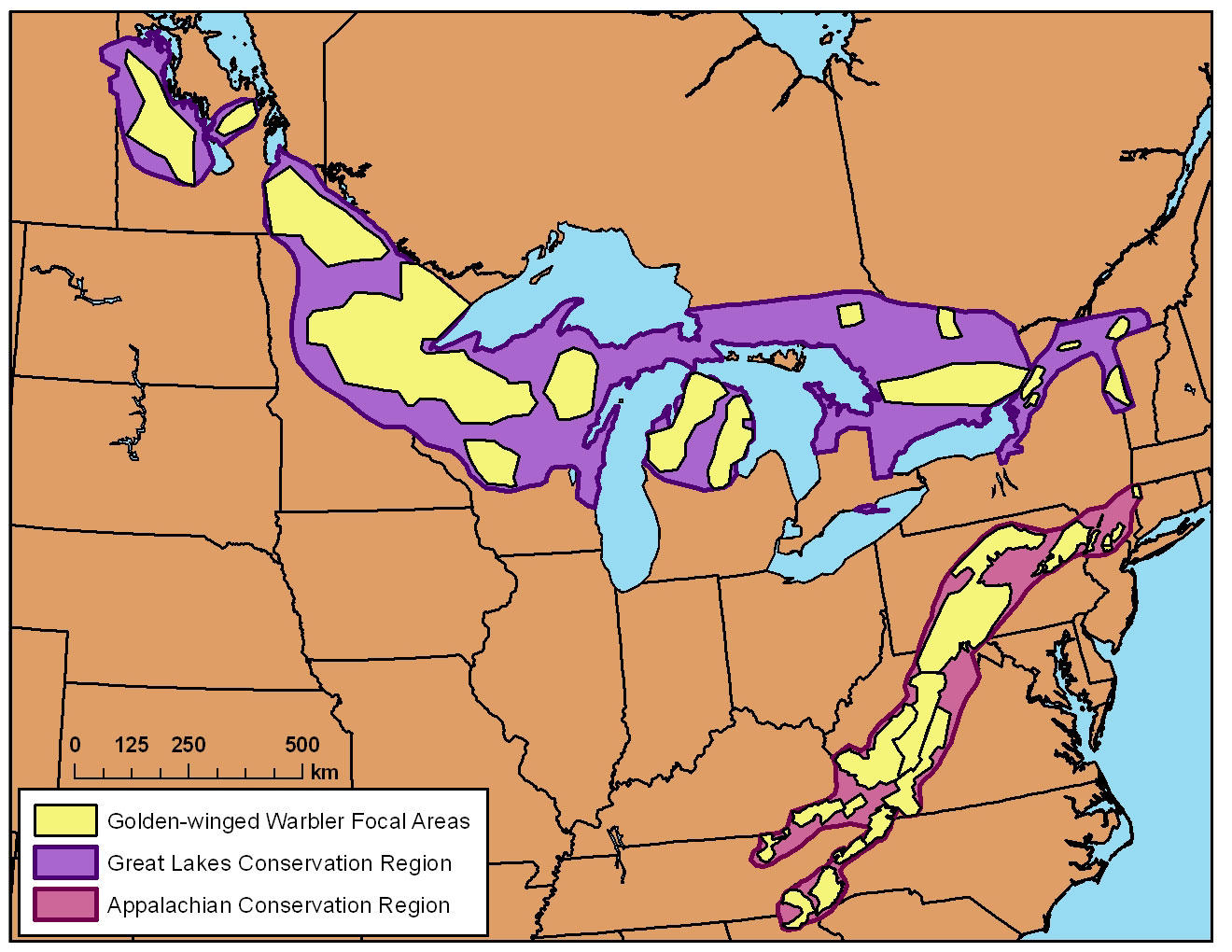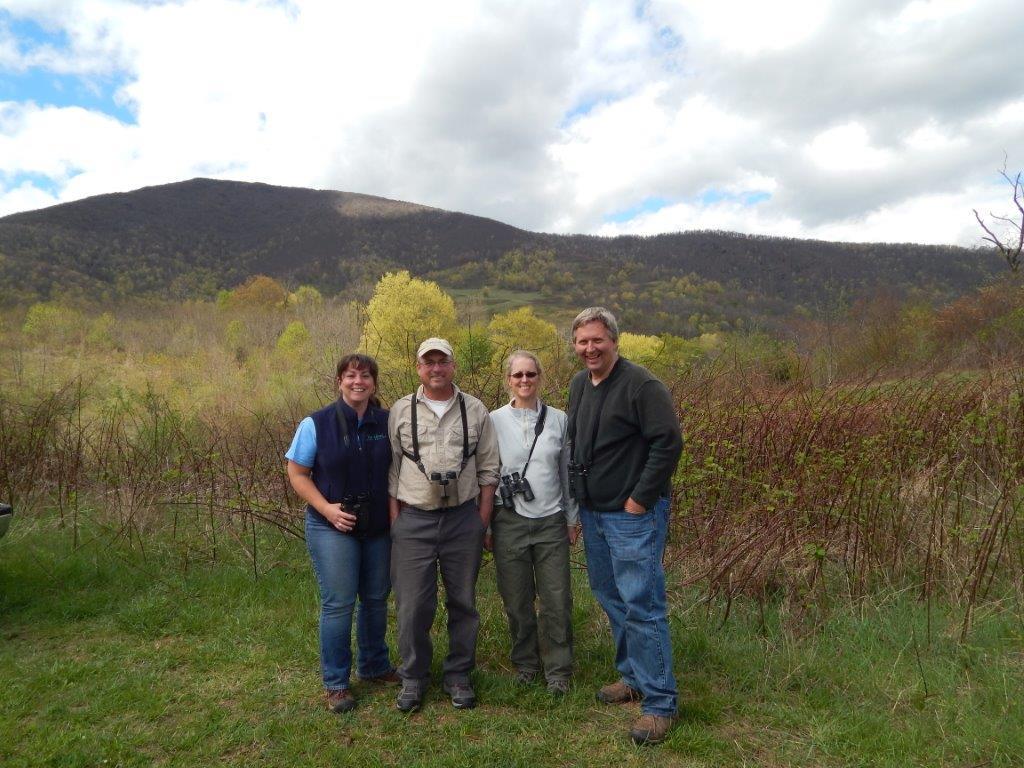Audubon North Carolina’s staff is committed to work beyond our state borders to further conservation along the entire Atlantic Flyway. Sharing our restoration techniques with partners across the Audubon Network will provide the best conservation success for Golden-winged Warblers and other priority species dependent on specialized habitats.
Recently, Audubon Vermont’s Conservation Program Manager Mark LaBarr and Conservation Biologist Margaret Fowle toured North Carolina’s Golden-winged Warbler habitats with Curtis Smalling and Aimee Tomcho visiting the region’s six main habitat types.
Although historically connected, Golden-winged Warbler populations of the Great Lakes and Appalachian conservation regions became widely seperated around five years ago. Despite its location in the Great Lakes conservation region, Vermont’s Golden-winged Warbler habitat has many similarities to Western NC. Sharing our land management practices will help Vermont’s biologists plan future conservation goals.

Collaborative Conservation
Vermont’s stewardship goals also include engaging private landowners in restoration efforts. During their visit, the Vermont team met our first landowner enrolled in North Carolina’s Working Lands program. The group also spent time setting up mist nets to recapture Golden-winged Warblers that were equipped with geolocators in 2015. Audubon Vermont will be conducting a similar study this year.
Audubon North Carolina is thankful for the partnerships that support our ongoing conservation work.
Click here to learn more about Golden-winged Warblers and our work to restore their nesting habitats through the Putting Working Lands to Work initiative.





